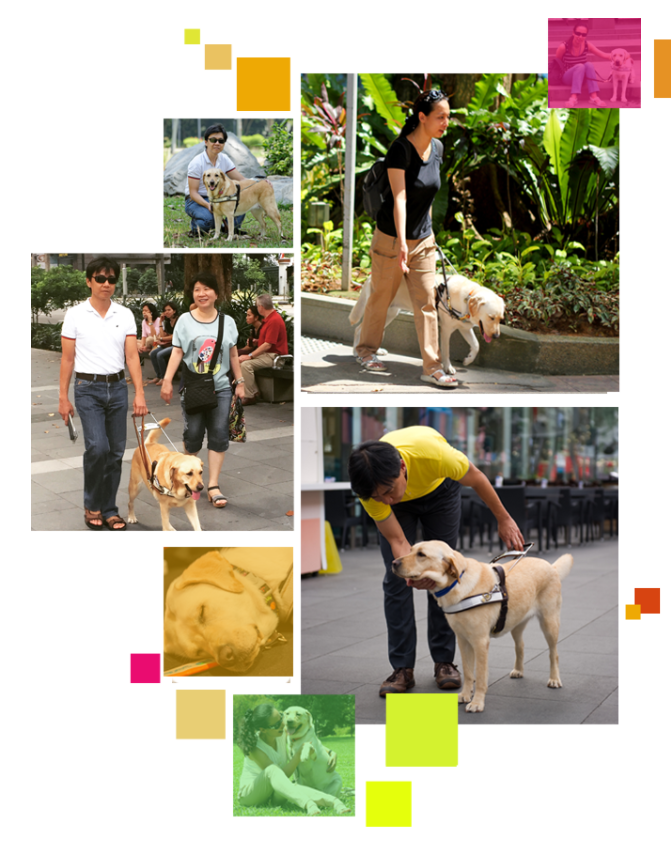In case you don't know this already, guide dogs are not technically pets; they are visual mobility aids for people who are blind.
There are eight of them in Singapore at the moment who work with and for blind and visually-impaired people who are trained to move around with them.
You can recognise a guide dog through the harness he or she is wearing while walking alongside his or her owner:
 Screenshot from Guide Dogs Association of the Blind website
Screenshot from Guide Dogs Association of the Blind website
Essentially, guide dogs are the ones whose innate ability to guide is harnessed to improve the safety and mobility of blind or visually impaired people, allowing them to move around independently.
Here are two things you need to know about guide dogs:
- They're not pets, so you shouldn't touch them, talk to them or try to pick them up.
Doing so will distract them from their work. There are signs on their harness that say so, too.
- The law allows them to enter all food establishments (including restaurants, cafés and fast-food outlets, for instance), shopping malls and other public or private market, as well as trains and train stations.
This means they aren't supposed to be turned away. Guide dogs are allowed to enter all these places legally, and have been trained to conduct themselves in a manner that doesn't disturb anyone else.
With that said, we're talking about this now because of a recent Facebook post from one Yin Mee Cheah about guide dogs, and her friend's experience handling one named Leah.
In summary, she shared the reactions people have when they meet her and Leah:
- They would dramatically jump out of their chairs and shout at Leah, sometimes shouting "Take it away!";
- They would claim dogs are not allowed indoors, even though Leah is an exception, even ignoring explanations from her friend's husband;
- They would leave a lift if her friend entered with Leah;
- An old man once complained about Leah when she brought her on a bus;
- Many taxi drivers also turn her friend away when they see Leah with her.
You can read it in full here:
It takes a lot to be a guide dog handler
It isn't easy for a visually-impaired person to get a guide dog or be paired up with one because there are many conditions that must be fulfilled beforehand.
Here's how it works, according to the Guide Dog Association for the Blind:
"Guide dogs are provided to competent beneficiaries who fulfil stringent requirements that include possessing adequate Orientation and Mobility (O&M) skills and having been certified by our Guide Dog Mobility Instructor as having suitable home environments. The guide dog and its handler (collectively, the Guide Dog Team) will receive continual training and support from GDAB to ensure a viable and healthy relationship between handler and guide dog.
Guide dogs work exclusively with their handlers for eight to 10 years if conditions permit.
Therefore, they are more than a mobility aid, providing their handlers with companionship and increasing their handlers’ confidence and social contact."
Guide dogs are assessed for suitability by professionals from as early as the time they are born up till about two months' old. They are then trained at the same time as their prospective handlers — the visually-impaired person, specifically, and it is only after almost two years that a guide dog team is formed.
So let's be kinder to guide dogs and their beneficiary humans — and share this article with friends to help educate them that guide dogs are allowed indoors, on public transport, and even in food establishments.
They're just trying to do their jobs.
Since you're here, how about another article?
The official Mothership stand on the eternal debate: Books vs Movies
These are the things property agents shouldn’t be doing when they represent you
Top photo from Yin Mee Cheah's Facebook post
If you like what you read, follow us on Facebook and Twitter to get the latest updates.
If you like what you read, follow us on Facebook, Instagram, Twitter and Telegram to get the latest updates.
